”However here we also get the first doubtful use of the Holocaust in Beatrice and Virgil. We are told that fewer than two per cent of Holocaust survivors ever tell of their ordeal. And so:’For his part, Henry now joined the vast majority of those who had been shut up by the Holocaust.’Oh really? This author of a “fundamentally misconceived” idea he couldn’t let go of, being given sage advice by his publishers – save yourself, save your reputation, the idea is terrible, the book is a car-crash – is now comparing himself to those who suffered in the Final Solution? Elements like this challenge the reader’s attempt to give the book a fair hearing.” ( John Self )
Not exactly a pyjama party. But then anything that seems to deviate form the strict orthodoxy would seem to be just that. The holocaust is a subject that has been much maligned by revisionists and deniers, who have, at the same time served to limit legitimate debate and repressed artistic expression and interpretation on anything other that the most ghastly and completely appalling. There is a deep psychosis at work that has linked he victims and the abusers, while creating a tidy little industry and frame of reference that does not delve too deeply into the situational and contextual dimensions of authoritarian and fascist rule that catalyzed the tragedy; and according to many, are still present. The holocaust industry as its own agenda and organizations like The Simon Wiesenthal Center need to continue to justify their existence.
The debate over the holocaust is then, over the limits of representation and its ability to arouse trigger-happy volleys of anti-semitism and trivialization without looking at the broader context. That is, the holocaust being a major pillar for the ”raison-detre” of Israel and artistic attribution which defy convention are seen as part of a larger, mostly left-wing process of de-legitimization of the state. John Boyne and Yann Martel are two writers who have had to face the music of Holocaust trivialization.
Martel has been looking for support for his Holocaust novel ”Beatrice and Virgil” in a gale-force of knee-jerk and more reflective and composed, less visceral, negative reviews; basically that his semi-absurdist assault on the ”limits of representation” had crossed into a no-mans-land that desecrated the moral taboos that protect the enormity of the event from trivial interpretation. The basic plot synopsis of Martel is actually quite brilliant: An Animal Farm like allegory of the holocaust with the setting in departure from a taxidermist shop. A story within a story which is a refracted version of real life. Credible reviewers have gassed the book on technical, structural and literary grounds which leads one to surmise that a decent concept without intellectual horsepower to motor it over the rugged ”Shoah”, terrain is a recipe for a wrecked vehicle.
”It is an idea that could — should — work. The great Yiddish novelist Isaac Bashevis Singer wrote: “In relation to [animals], all people are Nazis; for the animals, it is an eternal Treblinka.” Today’s mechanised farms can resemble — and I suspect that this must be true even for those who were not, like me, raised vegetarian — concentration camps for animals. Martel has spotted something big. There is an Animal Farm that makes us think both about the Holocaust and the world we live in screaming to be written. Beatrice and Virgil, however, is not that book….A grand opportunity has been squandered with Beatrice and Virgil. The best that can be said about it is that it is not as bad as some say it is. Fifteen years ago, a short novel by the Japanese novelist Yasunari Kawabata seemed to me to fail aesthetically — and yet impressed me with its sheer strangeness.” ( Aravind Adiga )
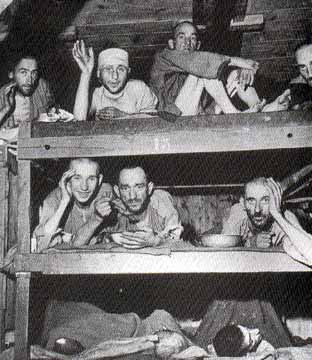
briancuban.com: ''According to noted historian Gerald Feldman, Allianz had given money owed to Jewish beneficiaries of their life insurance policies to the Nazi authorities instead. They also insured the construction of concentration camps. Feldman has written that Allianz sold life insurance policies to Jews with knowledge that Jews were being murdered in mass. They knew there would be very little if any chance of ever collecting. Allianz allegedly further collaborated with the Nazis to hide the fraud being committed on the Jews from the outside world portraying what Feldman termed “business as usual”. As an interesting media side-note the Allianz ties to Nazi Germany was dramatized in a Law and Order Episode entitled ” Blood Money“.
John Boyne was in the same cesspool as Martel with his ”The Boy in the Striped Pyjamas” which was in the vein of wishful sentimentality an almost fable setting in Auschwitz. Boyne’s work was followed standard convention and was more ”realistic” than Martel’s use of a deliberately disjoined allegory; but both artists were labeled renegades for the effort to be elastic with the underlying theme. Boyne’s premise of a friendship between a nine-year old prisoner and the son of the camp commandant is not plausible, but as an artistic expression it, and more relevantly, it calls into question one of the central issues of these transformational times; that is, what are you not allowed to say without being blasphemous, our present term for heresy.
”Worse. It would be much worse,” said Salman Rushdie on Monday, in a quick private speculation about what publishing The Satanic Verses would be like today. ’The argument has gotten more heated since then,’ he said, and left it at that, see
to say more with one arched eyebrow than some people say in their whole lives. To say it would be worse is saying a lot. People died back then, such as translator Hitoshi Igarashi, after Iran’s Supreme Leader Ayatollah Ruhollah Khomeini put a divine bounty on Mr. Rushdie’s head, a fatwa, for blaspheming against Islam in his 1988 novel.
“We are in danger of losing the battle for freedom of speech,” Mr. Rushdie said. It is being recast as a Western imposition, not a universal human right. Respect is being redefined as agreement, and censorship disguised as a virtuous defence of diversity. His own fatwa, he said, was “a rejection of the idea of fiction as a form” and “the beginning of something that was going to spread around the world.” Freedom of expression and imagination “is now very much back in question, and is strongly under attack by religious authorities and religious armies of different sorts, and not only Islam,” Mr. Rushdie said.” ( Joseph Brean, National Post )

www.subcin.com: ''Directed by Lina Wertmuller. One of the most chilling and heartbreaking films Ive ever seen, the story of a Don Juan and his odyssey through the horrors of WWII. His confrontation with a grotesquely fat female commandant is alternately hilarious and deeply disturbing. ''
Martel has been chastised for his attempt, unlike Boyne, to sidestep realism by using animals and taxidermists as substitutes for Jews and Nazis; an allusive approach that he felt would widen the ”terms of engagement” . ” The fear of trivialization is the result of limiting our representations of the event…By freeing up our representations of the Holocaust we will secure, overall, a greater, more nuanced, and more useful understanding of it”, Martel wrote in the Timesonline. The issue is that bad writing and poor execution can hide under this pretext without enhancing knowledge of the subject. If you’re going to be daring, you had better have the balls to pull it off;the holocaust is a litmus test of succeeding at an enigmatic riddle of art, morality and aesthetics. An example which came close would be Art Spiegelman’s ”Maus: A Survivor’s Tale”.
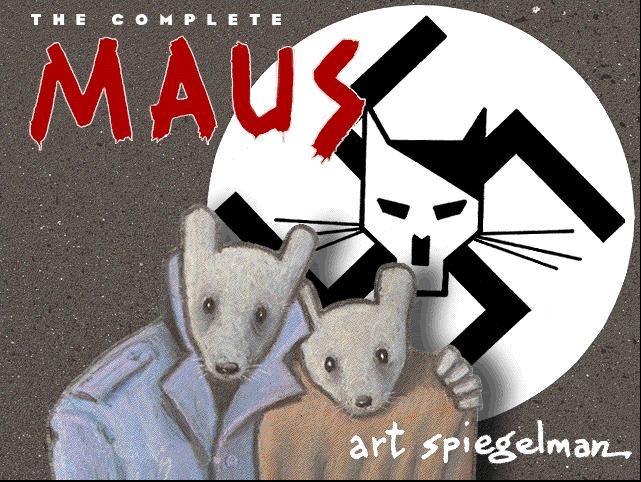
''The art style is beautiful and haunting. It is unbelievable how moving the images can be, despite being done in a cartoonish, stylized feel. Throughout the novel none of the characters are done realistically*, but they still create a powerful, human feel.''
”The power of “Maus” lies in its reality. Despite being drawn with anthropomorphized animals, there is an overwhelming feeling of realism to the entire story. Perhaps because it is being done as a framed narrative, and the reader is constantly being reminded that there is a real man telling his story and a real man sitting down to record it. It is strange, at times, that the reader can feel so close to the characters and see their story as truth when they are being depicted as animals.”
Roberto Benigni’s ”Life is Beautiful” was also pilloried in some quarters despite its popular appeal. It exposed some irreconcilable paradoxes of a deeply serious comedy, particularly on this subject. The gallows humor and protagonists death in the narrative were seen by some to allegorially justify the Holocaust. For example, Daniel Vogelmann, an Italian Jew who lost family members at Auschwitz, rejected the idea of presenting the evil of Holocaust in a manner that might mislead new generations into regarding the film as factual. Writing in the New Yorker, David Denby panned the film as “unconvincing” and “self-congratulatory” and accusing Benigni of perpetrating a Holocaust denial . A cartoon of a despairing concentration camp prisoner holding an Oscar statuette accompanied Denby’s review. Art Spiegelman, the author of the Holocaust comic book series Maus, drew the cartoon and called the film a “banalization” of the Holocaust.

Mel Brooks. The Producers. ''Evil dictators are, indeed, easy targets -- their eccentricities and delusions make them easy to cut down to size, but we never forget the horrific human suffering inflicted at their whim. Perhaps it's a way to create distance between us and the all-too-common human capacity for cruelty, or perhaps it makes this capacity easier to comprehend. Or perhaps neither.''
Benigni had prepared for potential criticism by inviting Marcello Pezzetti of the Center for Contemporary Hebrew Documentation (Centro Documentatzione Ebraica Contemporanea) of Milan to serve as historical consultant for the film. The aim was to gain not only the approval of the Italian Jewish community but also the expertise of its members. Benigni had seen Ruggiero Gabbai’s documentary film Memory (Memoria) (1997), in which Pezzetti interviews Italian Auschwitz survivors. Pezzetti, who refused to accept a fee for his services on Benigni’s film, realized the enormous professional risk involved in aiding an actor with a comic reputation like Benigni on such a delicate project; indeed, there was the danger that the film could spark a Holocaust comedy genre in the manner that Liliana Cavani’s Night Porter (Portiere di notte) (1974) spawned a genre of Nazi pornography films in the 1970s.
”If Benigni’s film has any roots in Italian cinema it is in Lina Wertmuller’s Seven Beauties (Pasqualino settebellezze) (1975), a film also nominated for the Best Foreign Film Oscar, which focuses on survival and a crude joy for life. The film opens with a depiction of barbaric executions of Jews by Nazis in which the Italian protagonists are forced to consider their own culpability as Italians, Germany’s allies in the war. Wertmuller, like Benigni, was criticized for profaning the Holocaust in the scenes of Pasqualino’s copulation with the camp commandant and Pasqualino’s later insistence on procreation as a means to ensure survival” ( Carlo Celli )
Martel’s book is just another salvo, and an antagonizing one, on the issue of the ”Jewish Question” ; in his case a house party on the graves of the dead since there appears to be a disconnect between comprehension and the veneer of provocation that may have been his guiding principle. ”But tacking horrendous reality onto a silly story (and you ain’t seen nothing until you get to the thirteen cards of ‘Games for Gustav’ that close the book) is not Beatrice and Virgil‘s only, or even main, problem. It’s a confused mess. Martel never seems to get a clear run at what he wants to say, or gives any indication that he knows what that is. One of a novelist’s greatest gifts should be to hide from the reader the furious toil that goes into writing a book, to make it appear as though it was published just as it was conceived. But in Beatrice and Virgil, the effort, the edits, the repeated returns to the drawing board, are all visible, a palimpsest on the page. In fairness to Martel, he has self-awareness, and there are repeated references in the book that suggest he knows what a failure it could be interpreted as. His intentions no doubt are good, but even a donkey knows where good intentions lead.”


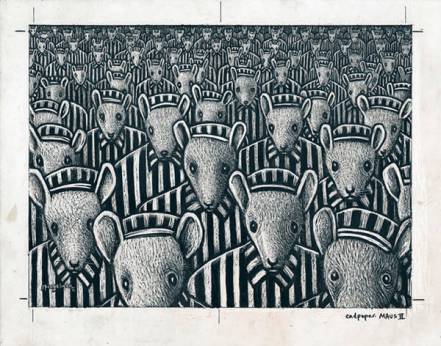
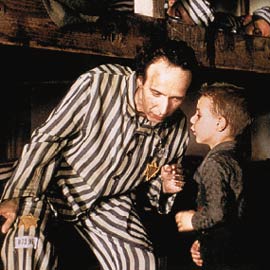

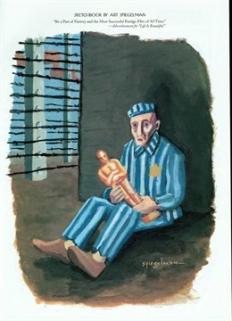
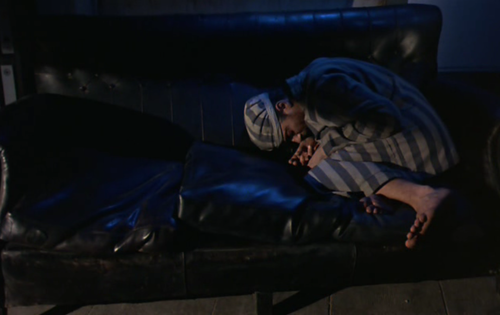





 COMMENTS
COMMENTS



